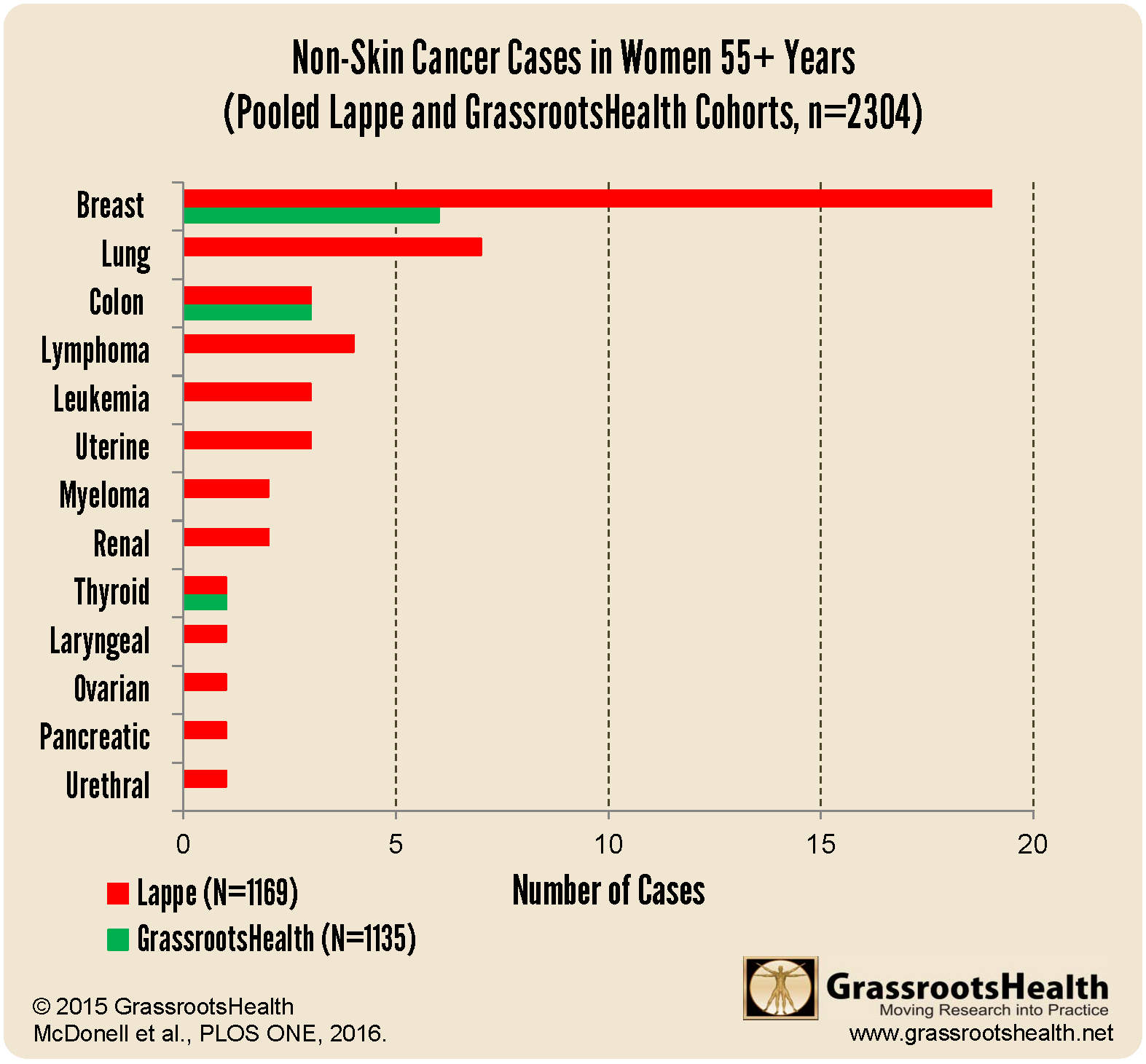In April 2016 GrassrootsHealth published a paper on vitamin D levels and all non-skin cancers. This paper used data from two different groups – one from a randomized controlled trial (RCT) and one from a subset of our D*action and Breast Cancer Prevention projects. A summary of this paper is here.
This combined data set, with 2,304 women aged over 55 years and older, was relatively balanced between the two groups – 1,135 from D*action and 1,169 from the RCT. The median vitamin D levels, however, were not similar. The D*action group had a median level of 48 ng/ml (within our recommended range!) and the RCT group had a median of 30 ng/ml (which is higher than the US average of 25 ng/ml).
Also different was the number of lung cancer cases, although it was not statistically significant (p = 0.11). The D*action group had zero lung cancer cases and the RCT group had seven. This seems to be consistent with the hypothesis that vitamin D levels in recommended ranges (40-60 ng/ml) will reduce lung cancer incidence and that the higher the vitamin D level, the less likely you will be to get lung cancer.

Other Vitamin D and Lung Cancer Findings
Data from Tretli et al. followed 210 lung cancer patients for up to 18 years. Survival length was mapped with respect to vitamin D levels. Those with the highest vitamin D levels had the longest survival rates and the difference between the highest and lowest groups was dramatic.
